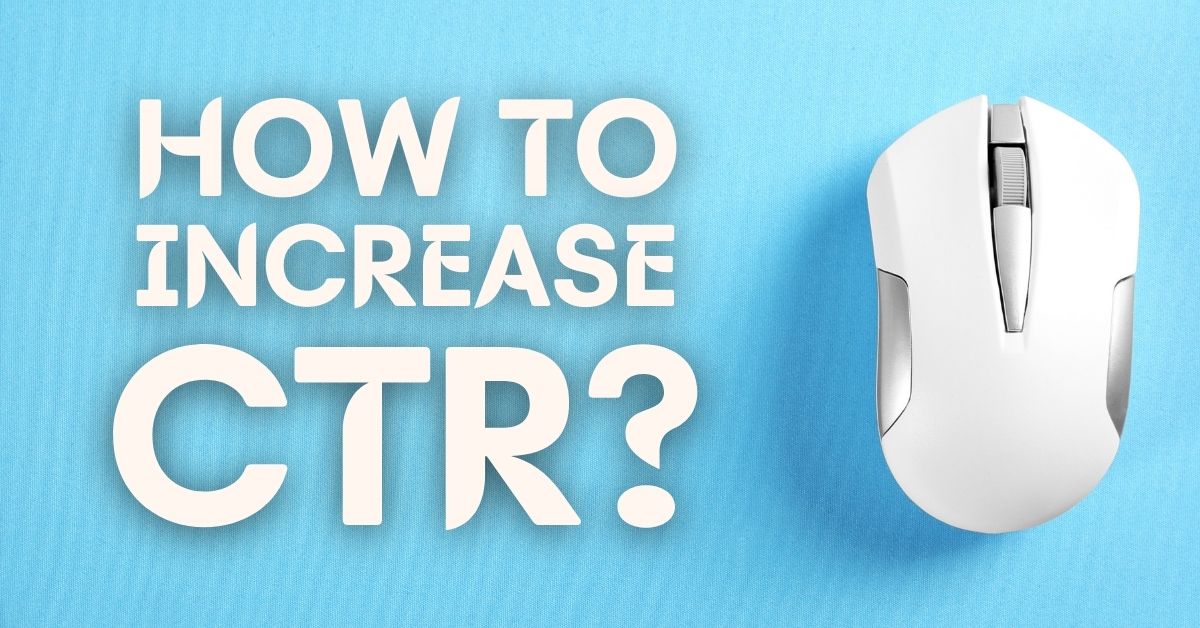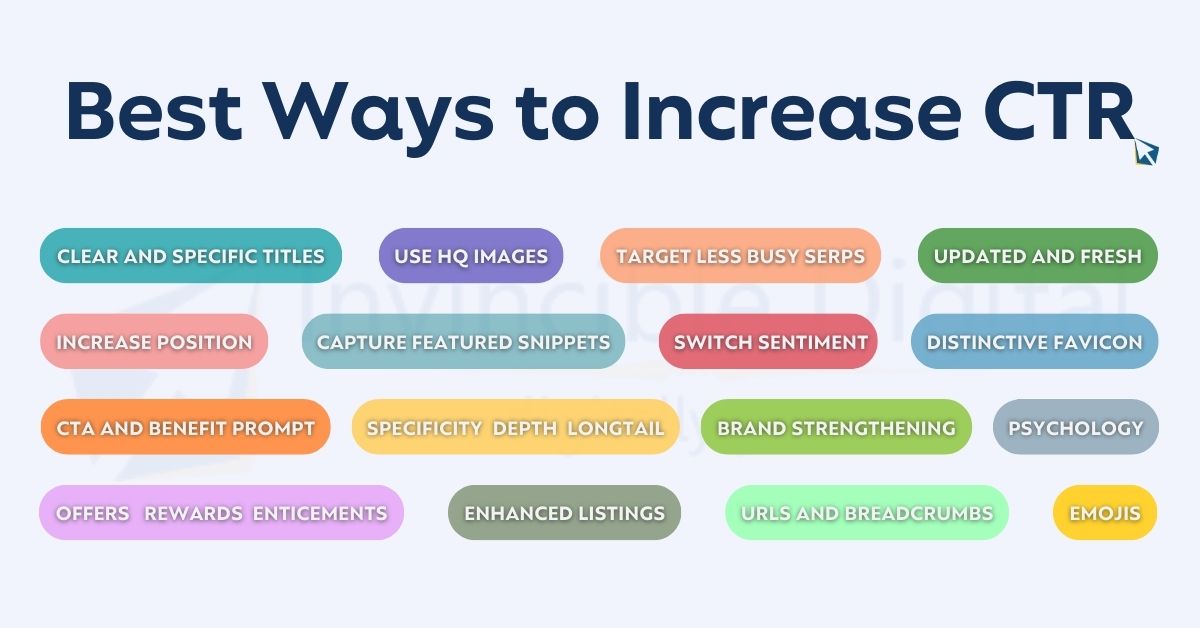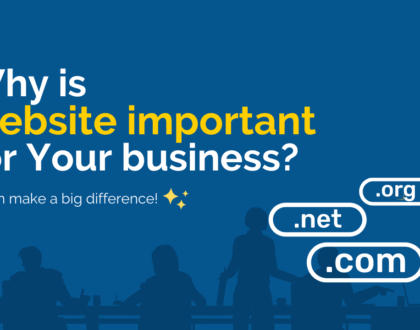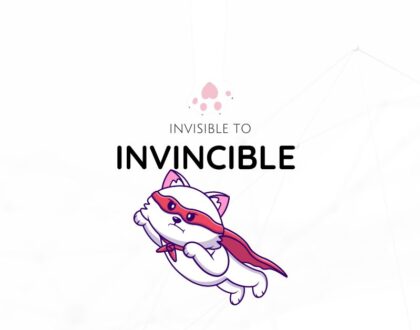Converting Impressions into Clicks: Unlock The Art of Better CTR

Turning impressions into clicks is one of the biggest struggles of every digital marketer especially SEO. I’ve been through and understand the frustration that comes with low click-through rates (CTR) despite having a well-optimized website.
The good news is that there are effective strategies you can implement to boost your website’s CTR and increase organic traffic. And you don’t need any expensive tools for it. Google’s Search Console is enough.
Google Search Console (GSC) provides valuable insights into your website’s performance. Studying the data and metrics from GSC Performance Report helps you understand your website’s performance in terms of clicks for related search query. It also helps you identify areas for improvement and develop specific strategies to increase clicks and engagement.

What strategies, you may ask? Well, it can be anything and everything, from crafting compelling meta titles and descriptions, leveraging structured data for enhanced search results to optimizing pages’ UX design for featured snippets, and much more.
Too much buildup, now let’s get to the point. Here are some actionable tips and techniques that can help you convert impressions into clicks.
Best 16 Tips for Turning Impressions into Clicks

1. Specificity/Clarity:
Capturing the user’s attention is cardinal. And nothing does this better than clear and specific titles. Front-load your titles with primary terms, intent terms, and qualifiers.
- Primary terms are the main keywords that define the topic or the subject of the content (such as “Home Electrician”, “Dentist”, “Marketing Agency”, etc.).
- Intent terms are the keywords that indicate the purpose or goal of the content. They can be:
- Descriptive (such as “how to”, “guide”, “review”, etc.)
- Comparative (such as “best”, “top”, “vs”, etc.)
- Transactional (such as “buy”, “download”, “subscribe”, etc.)
- Qualifiers are the keywords that narrow down or specify the scope or context of the content. They can be:
- Modifiers (such as “easy”, “fast”, “free”, etc.)
- Locations (such as “in India”, “in New Jersey”, etc.)
- Attributes (such as “for beginners”, “with examples”, etc.)
Additionally, expand upon these elements in the descriptions to provide further insight into the focus and suitability of your content.
2. Increase Position:
It’s a simple and well-known fact – higher rankings usually translate to more clicks. Focus on improving your search engine rankings through effective SEO strategies to maximize your click-through rates. Ranking top of the SERP for organic search results will give you kings share in clicks.
3. CTA/Benefit Prompt:
Make it crystal clear in your titles and descriptions what’s in it for the user.
Utilize action verbs such as “gain”, “get”, “download”, or “buy” to create a sense of urgency and value.
4. Offers / Rewards / Enticements:
For e-commerce and other similar industries, enticing users with offers and rewards can be highly effective. Highlight benefits such as “free shipping” or “20% off first purchase” to incentivize users to click and engage with your content.
5. Enhanced Listings:
Take advantage of Schema Markup to enhance your listings with rich snippets. This structured data can provide additional information or visual elements that make your content stand out in search results.
6. Images/Additional Listings:
Elevate your listings using higher-quality images with greater dimensions. This can potentially lead to image attachments in the Search Engine Results Page (SERP) or inclusion in image blocks/carousels. Incorporating videos can further enhance your visibility and attract more clicks.
7. Brand Strengthening:
Building a strong brand presence can significantly impact your click-through rates, especially for branded queries. Aim to trigger a Knowledge Panel (KP) that provides additional information about your brand. Achieve this by being listed on industry sites, securing mentions or links from authoritative sources like Wikipedia, and maintaining consistent brand information.
8. User Psychology:
Understanding the psychological triggers that prompt action can significantly impact your click-through rates. Use words like “don’t miss out”, “ending soon”, “just for the day”, etc. to incorporate elements like the fear of missing out (FOMO) or emotive language to evoke strong emotional responses from your audience.
9. Capture Featured Snippets:
Getting featured snippets can increase clicks on your content, based on the search term and information given. Ensure your content is highly informative and structured to increase the chances of being featured in knowledge graph.
10. Specificity/Depth/Longtail:
Sometimes, targeting a more detailed variation of a topic can yield higher click-through rates. By offering specific and in-depth content that aligns with user intent, you enhance the perceived relevance and attract more clicks. You can use phrases like “Chinese noodle soup recipes for kids”, “Orange one-piece dresses for Indian weddings”, etc.
11. URLs and Breadcrumbs:
User-friendly URLs and proper breadcrumb markup can influence how users perceive your SERP listings. URLs and breadcrumbs of your website also have a vital role in Search algorithms. By optimizing these elements, you can increase the click-through rate in certain cases.
12. Target Less Busy SERPs:
Remember, you’re not only competing against other businesses but also various SERP features such as featured snippets, local map packs, and ads. Analyze different variants and target SERPs with fewer competing items to increase your visibility and ultimately drive more clicks.
13. Distinctive Favicon:
As search engines include favicons in the SERP, having an icon that is visually appealing and easily recognizable can capture extra attention and encourage users to click on your listing.
14. Switch Sentiment:
Experiment with switching the sentiment in your titles. If you usually have a positive title, try rewording it with a negative tone to see if it elicits a stronger response and leads to more clicks.
15. Update/Freshness:
While it’s not recommended to simply change the “year” on articles or guides, updating and improving your content and user experience can make it more relevant to users. Change the title of content focused on yearly topics to get a temporary ranking boost and increase click-through rates.
Recommended Read: How to Plan and Update Old Content for Better Rankings
16. Emojis:
Emojis are colorful, fun and can convey emotions, ideas, and concepts in a simple and visual way. They can also help you stand out from the crowd of text-based results.
However, emojis have no direct effect on SEO, so you should not expect any ranking boost. While using it can help increase CTR, don’t fill your title and description with emojis, it might make your listing look spammy or unprofessional. Use one or two emojis at the most, and place them at the beginning or end of your title or description, or around important words or phrases.

Converting impressions into clicks requires strategic optimization and a deep understanding of user behavior. By utilizing the importance of specificity, user psychology, enticing offers, enhanced listings, and more, you’ll be able to boost your click-through rates effectively. Remember to regularly evaluate and improve your on-page SEO to keep up with changing search engine algorithms and user behaviors. Hope these methods will help you unleash the full potential of your website and search engine traffic.
If these are too much of a task for you, we can do it for you. Contact Invincible Digital to capture the maximum clicks on your website organically, Google Ads, Shopping Ads or social media.
Recommended Posts

Why Your Website Is Your Secret Weapon
September 4, 2024

SEO vs SEM: How SEM Help With SEO?
April 15, 2024


